Hellebores are the earliest-blooming plants in my garden. It's such a delight to see some color on these dark days.


The vegetable garden isn't a complete wasteland. Here's some garlic, along with a couple of winter weeds I was too lazy to pull:

Continuing with the edibles, both the red and green rhubarb are breaking ground:
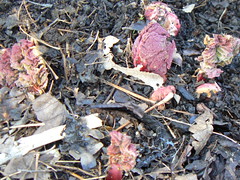
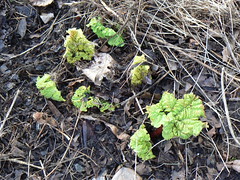
The woodland garden is beautiful even in winter, because the sword ferns look fresh and green:
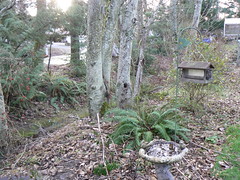
I don't know what those mysterious red berries are. They grow on wild vines that I keep mostly pulled, but I let a few stay so I can enjoy the berries in winter. Here's a closeup:

And then there are the spring bulbs. Daffodils and Spanish bluebells are just starting to break ground:
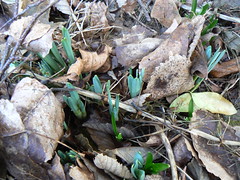
And finally, filbert catkins grace the winter landscape:
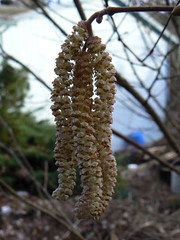
It's still winter, but the days are getting longer, and the first plants of spring are pushing sleepily through the sodden soil. Hope is on the horizon...


4 comments:
Janet, thanks for visiting my blog!
I would love to have the color in my garden you have in your hellebores. I have just one, and it's white. I'll remedy that this year, for sure.
Those pretty red berries look to me like belladonna, a.k.a. deadly nightshade. You might want to get additional input on ID-ing them, especially if you have children of the age to pop one in their mouths.
I get deadly nightshade in the garden from time to time, but this thing is different. It's a big vine covering many feet. It smells funny, which makes me think it could be in the nightshade family. I'll try to take a picture of the leaves this spring.
Hi Janet,
For what it's worth, I have a degree in plant biology from the UW, and I'm pretty sure your photo is of deadly nightshade aka bittersweet nightshade, aka belladonna. It can grow in many different habits (shrub, vine, small perennial). I had a huge woody vine of it growing up my pear tree when I moved into my home. Here's King County's link of invasive species describing it http://www.kingcounty.gov/environment/animalsAndPlants/noxious-weeds/weed-identification/bittersweet-nightshade.aspx. You might want to replace it with a native berry because it can be very hard to manage in addition to posing a degree of hazard. Thanks for the lovely blog.
Rose, thank you! You're right - that's it. I didn't know to search for bittersweet nightshade, and I couldn't find any pictures of the vine form. I'll do my best to get rid of it, now that I know it's invasive.
Post a Comment